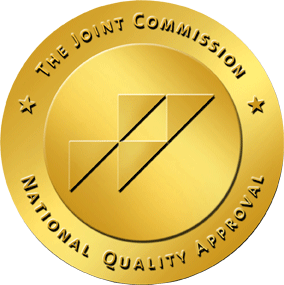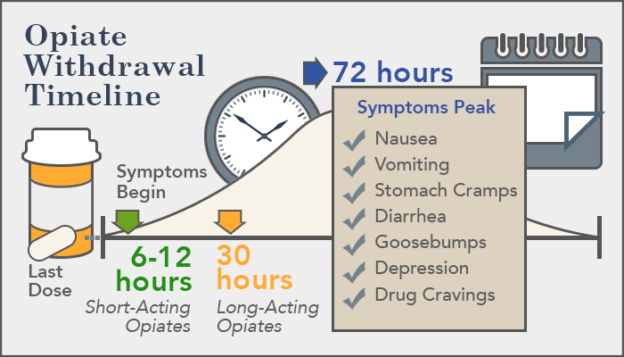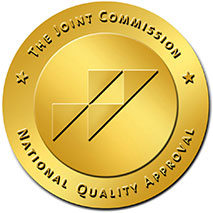When is an opiate detox necessary? What should you expect during an opiate detox? These are two common questions we get every day. Do you know someone who is struggling with opiate addiction? Are you struggling with opiate addiction? If you are, then this guide will help you to know the importance of opiate detox and the expectations.
What are Common Opioids That May Require an Opiate Detox?
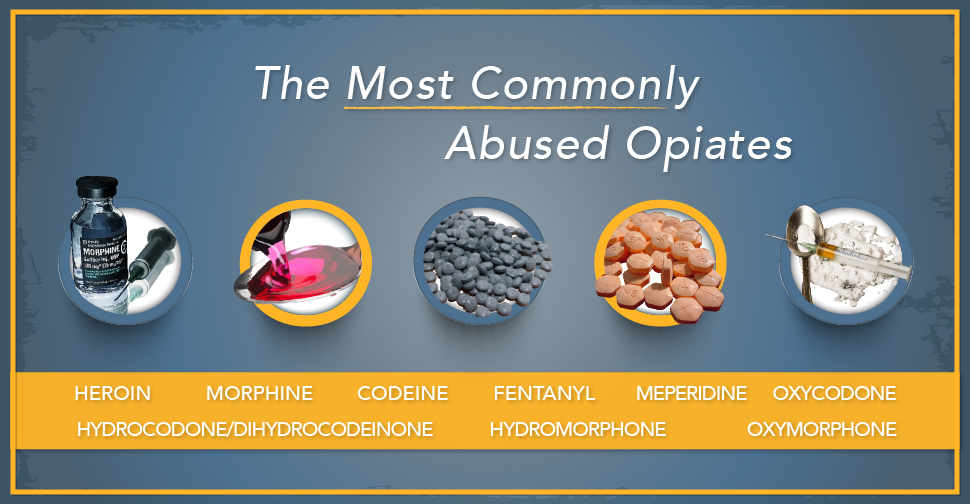 The United States is in an opiate epidemic taking over 150 lives per day. One of the biggest causes stems from prescription drugs. Doctors and Subsoxond clinics have been overprescribing for years. Opiates cover a lot of prescription drugs including;
The United States is in an opiate epidemic taking over 150 lives per day. One of the biggest causes stems from prescription drugs. Doctors and Subsoxond clinics have been overprescribing for years. Opiates cover a lot of prescription drugs including;
- Tramadol
- Oxycodone
- Morphine
- Methadone
- Hydrocodone
- Fentanyl
- Dilaudid
- Demerol
- Darvon
- Codeine
If your doctor prescribes painkillers for longer periods and larger doses, you are at risk of forming a dependence on this drug. A person who is dependent on these drugs is likely to continue their use to make them function normally. If you decide to abruptly stop using them, you will become uncomfortable because your body will be struggling to adjust your body to your substance abuse.
Who is at Greatest Risk of Needing an Opiate Detox?
Realistically we all are at risk of getting addicted to opiates. However, there are common signs for drug abuse and alcoholism. According to the Web MD, you can become addicted to opiates in just a couple of days. Addiction has no boundaries and can affect anyone. Most of the people who are likely to overdose fall in the following bracket:
- People who have low, medium, and socioeconomic statuses
- Teens
- Young Adults
- The middle-aged
- Yes, Seniors, this is a hidden epidemic
- Males
- People who are dependent on opioids and take the drug in high dosage
- People who have mental health disorders that are co-occurring
When a person overdoses, a medical practitioner will reverse the effects of the overdose by using an antidote known as an opioid antagonist. It is introduced into the body intranasal, subcutaneously, intramuscularly, or intravenously. Even though this drug does wonders when it comes to reversing the effects of an overdose, the person will still need to seek immediate medical attention at an accredited hospital or clinic.
What are the Withdrawals Like During Opiate Detox?
The main reason for opiate detox is to reduce withdrawals and rid the body of opioids. The withdrawal symptoms are extremely uncomfortable and intense. This is how detox came into existence. It makes this process of dealing with withdrawals more effective and safe. Below is a guide that will help you figure out whatever you need during detox and why treatment is good for getting a full recovery. Our drug rehabs Carmel, Indiana staff realizes that opiate withdrawal symptoms can be extremely intense and uncomfortable. As a result, medical detox is the safest and most effective way to undergo withdrawal from these drugs. Find out what to expect during detox, and why additional treatment is so important for achieving a full recovery.
The withdrawal symptoms depend on a number of factors such as the painkiller, the tolerance of the person, and the length of use. The most common withdrawal symptoms are vomiting, sweating, and fever. However, there is also psychological and physical distress of the affected person. Because of the severity of the symptoms, most people opt to keep using the drugs to function normally. This constant cycle of using and stopping creates a dependency. It makes it even more difficult for the person to stop the use of the drug. Trying to abruptly cease the use of the drug is not easy. This is where opiate detox comes in. it is recommended by medical detox professionals because it overcomes opioids effectively and safely.
Factors Affecting Withdrawal of Opiates?
Opioid withdrawal symptoms range from severe to mild. A patient who suffers from extensive addiction or substance abuse is likely to have very severe symptoms. Extensive addiction is characterized by indulging in large dosages of the substance and use of the substance for a significant period. There are a number of factors that affect the types of withdrawals a person gets;
- Mode of substance administration
- Severity of addiction
- Length of addiction
- Family history of dependence on the drug
- Behavioral disorders
- Mental disorders
- Well-being and current health of the person
Warning Signs and Symptoms of Opiate Withdrawal
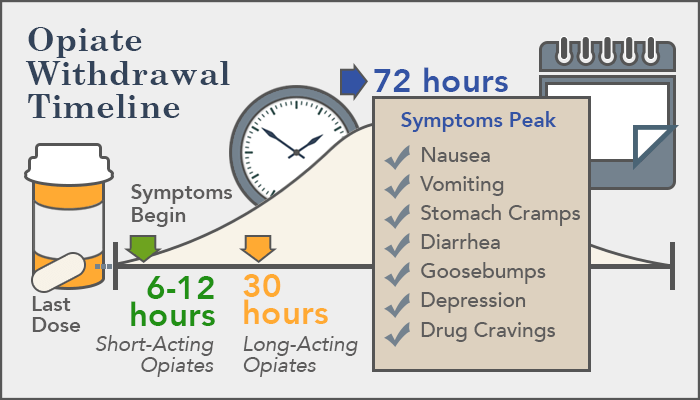 Opiate withdrawal can be grueling and is a rough experience. Getting opiate detoxification from a qualified addiction treatment center can greatly reduce the pains of withdrawal. There are non-narcotic comfort meds that can be administered to reduce the pains. For most opiate users, within twenty-four hours after their previous dose, they start experiencing a number of withdrawal symptoms;
Opiate withdrawal can be grueling and is a rough experience. Getting opiate detoxification from a qualified addiction treatment center can greatly reduce the pains of withdrawal. There are non-narcotic comfort meds that can be administered to reduce the pains. For most opiate users, within twenty-four hours after their previous dose, they start experiencing a number of withdrawal symptoms;
- Vomiting
- Tremors
- Nausea
- Change in blood pressure
- Constricted pupils
- Diarrhea
- Stomach aches
- Abdominal cramps
- Sweating
- Running nose
- Insomnia
- Muscle spasms
- Anxiety
- Agitation
Please note that opiate overdose is a likely result for people who overindulge in the drug. People who relapse as they seek treatment have a higher chance of experiencing opiate overdose that can cause death. Symptoms of overdose include;
- Pupils that are pinpoint
- Respiratory depression
- Unconsciousness
PAWS Score; How Long Does Each opiate withdrawal stage last?
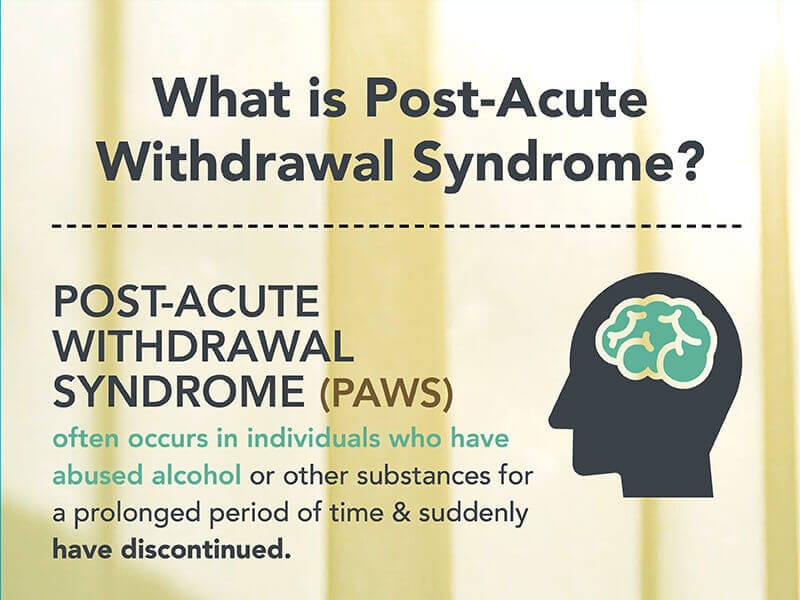 Opiate withdrawal is categorized as post-acute withdrawal syndrome (PAWS). Stages may include fully-developed acute, early acute, and anticipatory. Acute is what occurs within the first few hours of the last dosage. The person experiences flu-like symptoms. After this stage ends, the protracted abstinence period sets in. this takes about six months. It’s at this time that the person becomes extremely vulnerable to various triggers that may lead them to relapse.
Opiate withdrawal is categorized as post-acute withdrawal syndrome (PAWS). Stages may include fully-developed acute, early acute, and anticipatory. Acute is what occurs within the first few hours of the last dosage. The person experiences flu-like symptoms. After this stage ends, the protracted abstinence period sets in. this takes about six months. It’s at this time that the person becomes extremely vulnerable to various triggers that may lead them to relapse.
- Anticipatory period: It lasts for three to four hours after the previous dose. The person gets anxiety or fear related issues. Furthermore, the person gets cravings for the drug and engages in drug-seeking behavior.
- Early acute: It lasts for eight to ten hours after the previous dosage. Restlessness and anxiety kick in. the person develops flu-like symptoms like stomach aches, sweating, vomiting, and even nausea. The drug-seeking behavior persists in this stage too.
- Fully-developed acute stage: It lasts for a day to three days after the previous dosage. This is when the symptoms reach their optimum. The person starts developing increased blood pressure, insomnia, diarrhea, muscle spasms, and even body tremors. The cravings of the person reach their optimum.
- PAWS: It lasts for up to twenty-four months after the previous dosage. The acute symptoms are not experienced at this stage. The person may have mood swings, poor concentration, insomnia, agitation, depression, anxiety, drug dreams, and cravings. The person is likely to experience environmental triggers that may make them relapse.
Medication-Assisted Treatment Can Help with Opiate Detox
Medication-assisted treatment (MAT) is popular across the nation from opiate detox West Palm Beach to Carmel, Indiana. It aids in controlling long-term issues that surround opiate withdrawal-like drug cravings. At our drug rehabs Carmel centers a doctor will tapper down the dosage until the patient achieves full-time recovery from the acute withdrawal symptoms. The medications are prescribed to patients who are still undergoing the inpatient rehab center. The common medications administered in opiate detox include –
- Clonidine: This is the main medication prescribed to suppress the withdrawal symptoms of the opiates. They also treat high blood pressure. It aids in the reduction of the symptoms of stress and anxiety. It is administered as a skin patch or an oral tablet. Unlike most opioid painkillers, it does not cause euphoric feelings. This makes it easier for the person who is using it to discontinue use of the drug when the symptoms stop.
- Methadone: This medication was once widely used in treating detox. However, with time it has been replaced by Buprenorphine. It helps patients ease off the effects of the drug that they are addicted to. It is highly effective in long-term treatment methods for the patients who are suffering and struggling with opiate addiction that has become chronic.
- Buprenorphine: This drug is also known as Subutex or Suboxone. It is mainly used to treat the effects of alcoholism but can also double-up to treat the symptoms of opiate withdrawal. It is a strong medication option but it does not mimic the effects of other strong opiates like hydrocodone. It decreases the symptoms of withdrawal and suppresses the patient’s cravings for the opiate. This helps maintain the motivation of the patient and reduces the chances of relapsing when faced with a trigger.
Opiate Detox Carmel is the First Stage of Drug and Alcohol Addiction Treatment
Opiate detox alone is not enough to help you in your fight against your addiction. After completing the program, it is advisable that you seek further treatment. Drug and alcohol addiction treatment centers can help you get more equipped for the world and your new drug-free life. Our drug rehabs Carmel facilities have the best resources when it comes to helping you understand and overcome the root cause or trigger of your addiction.
They offer substance abuse treatments such as group counseling sessions, one-on-one counseling sessions, 12-step programs, and, cognitive behavioral therapy. Apart from this, you will also find creative expressions activities like music and art therapy. These activities are supplemented by twenty-four-hour monitoring that helps you maintain your focus and treatment after you leave the facility.
Programs Like Opiate Detox Carmel, Indiana Are Needed
 Opiate detox is necessary, as it’s the first step to long-term recovery. Call Emerald Neuro-Recover drug rehabs Carmel today at (317) 606-8778 we can help you with your opiate detox. Our opiate detoxification addiction treatment centers are only one of 1000’s across the US. The programs are designed to create safe and well-structured environments that guide patients through their withdrawal symptoms. The medical practitioners ease their patients off these drugs until when they are no longer depending on the drugs. Medications are used to reduce the severe nature of the symptoms and stop the cravings.
Opiate detox is necessary, as it’s the first step to long-term recovery. Call Emerald Neuro-Recover drug rehabs Carmel today at (317) 606-8778 we can help you with your opiate detox. Our opiate detoxification addiction treatment centers are only one of 1000’s across the US. The programs are designed to create safe and well-structured environments that guide patients through their withdrawal symptoms. The medical practitioners ease their patients off these drugs until when they are no longer depending on the drugs. Medications are used to reduce the severe nature of the symptoms and stop the cravings.
After completing a drug and alcohol rehabilitation program an assessment should be made. The medical team of the patient advises the best options for addiction treatment. This is because of the hands-on nature of the treatment that increases the patient’s likelihood of weaning off the drug. This step is very crucial when it comes to preventing relapsing and making sure a person has long-term sobriety.
Article written by Charles Davis, drug rehab SEO professional for Behavioral Health Network Resources.
